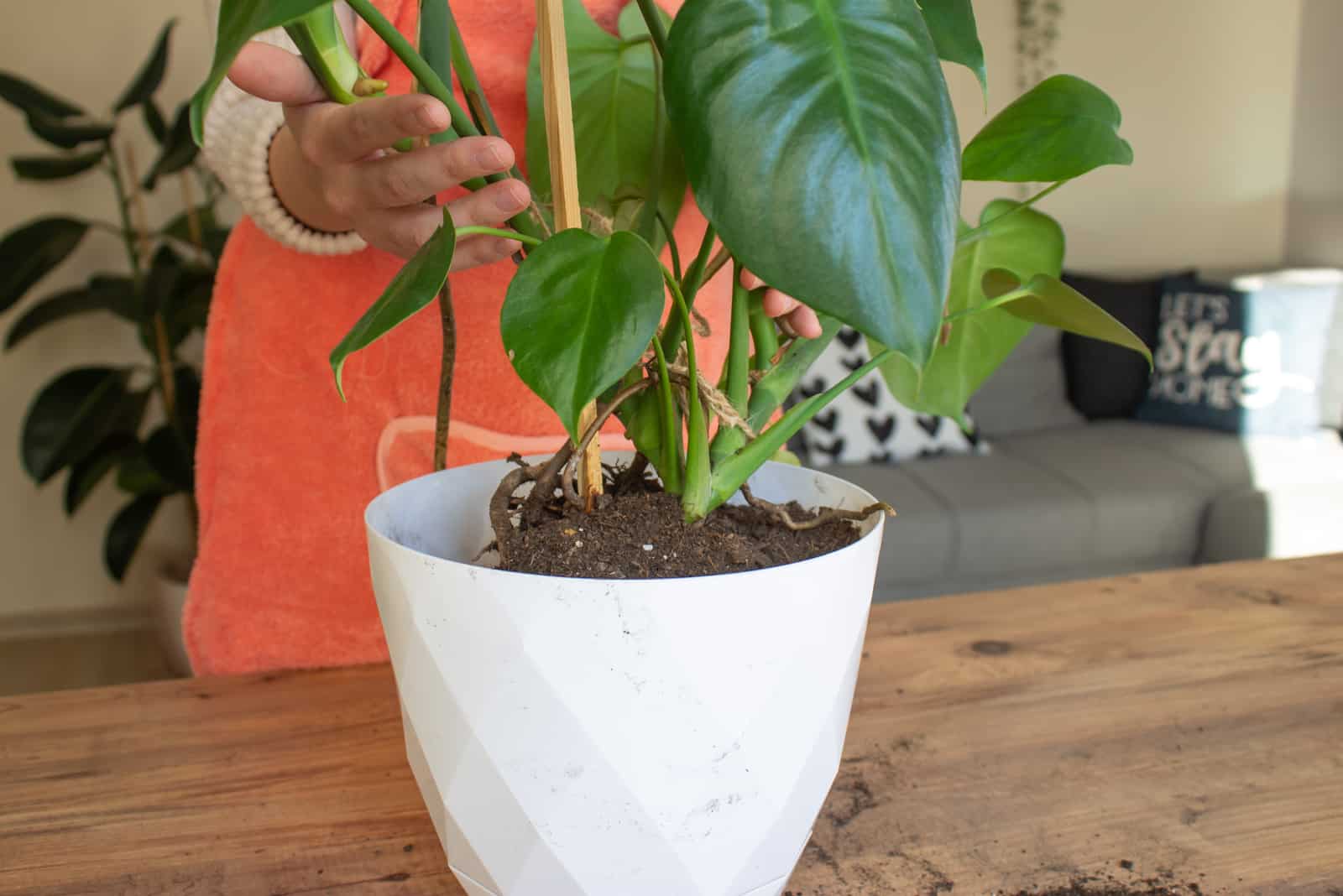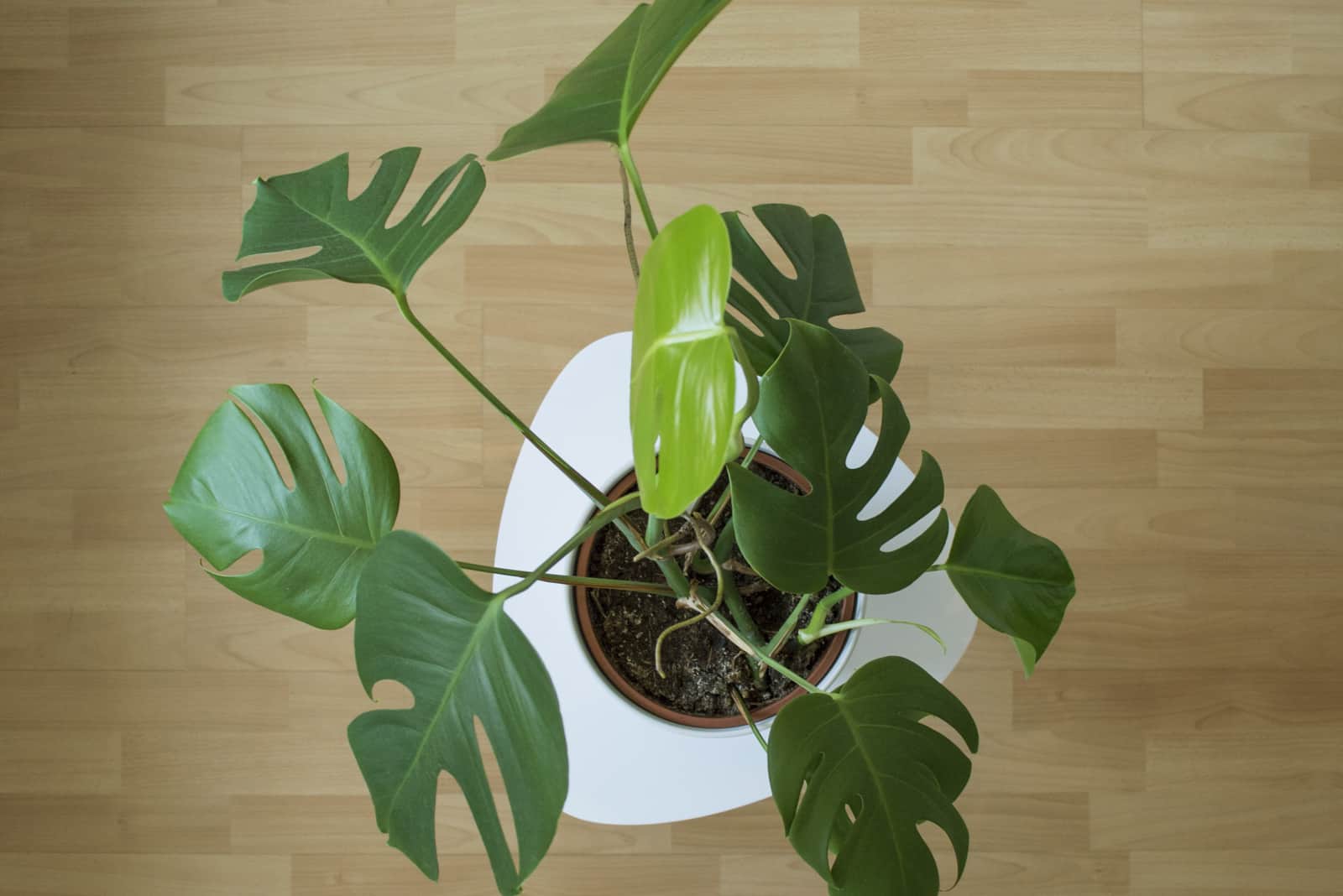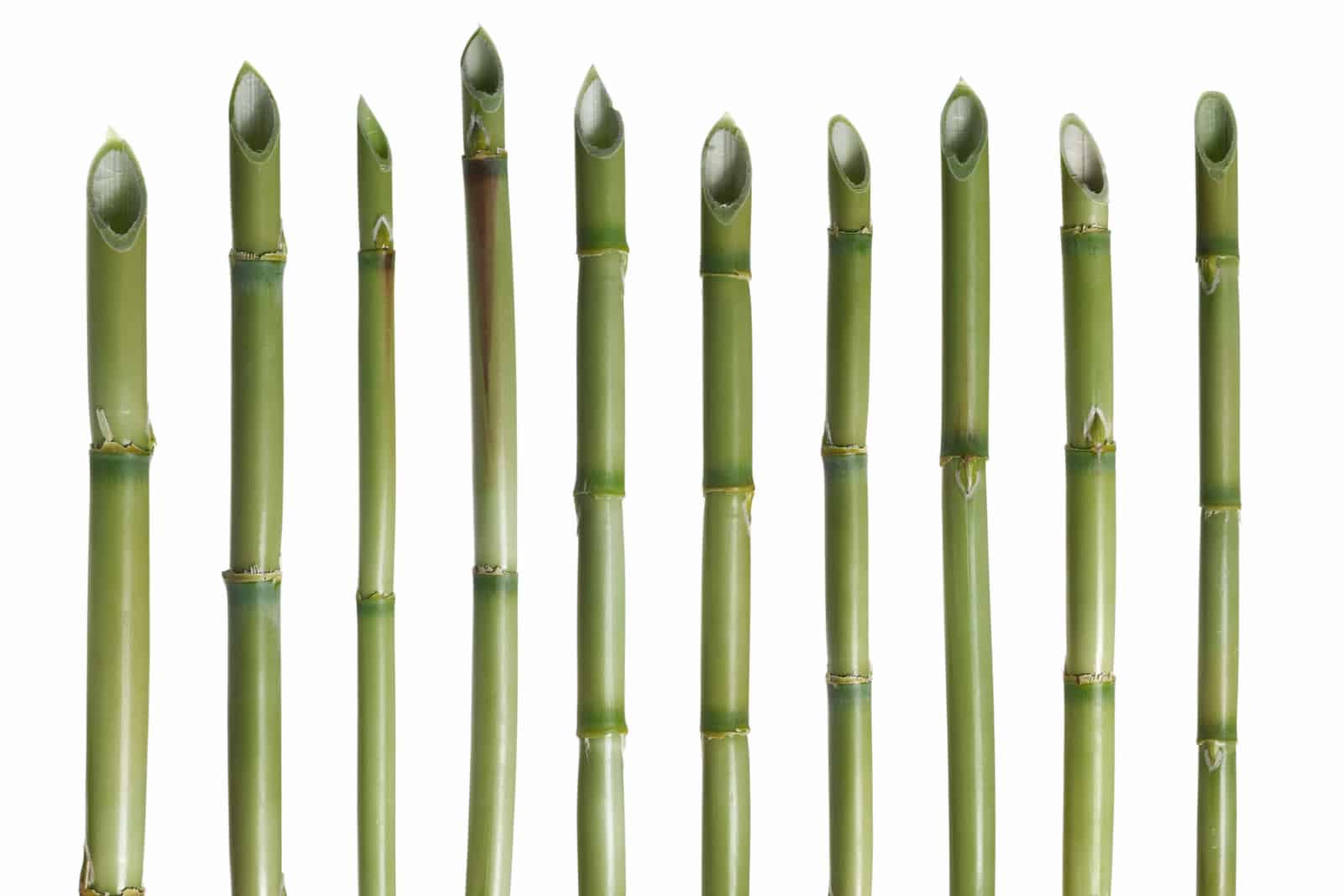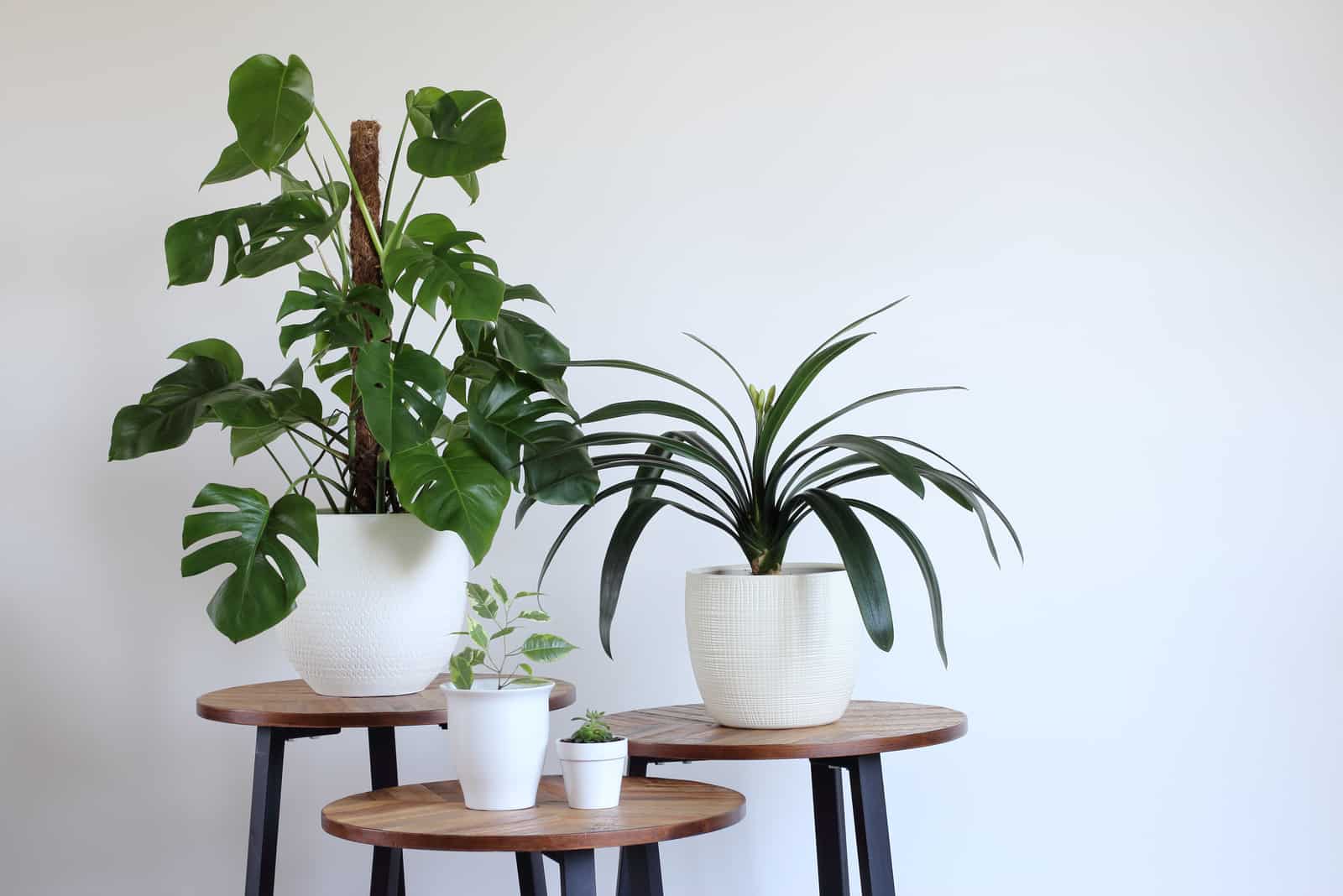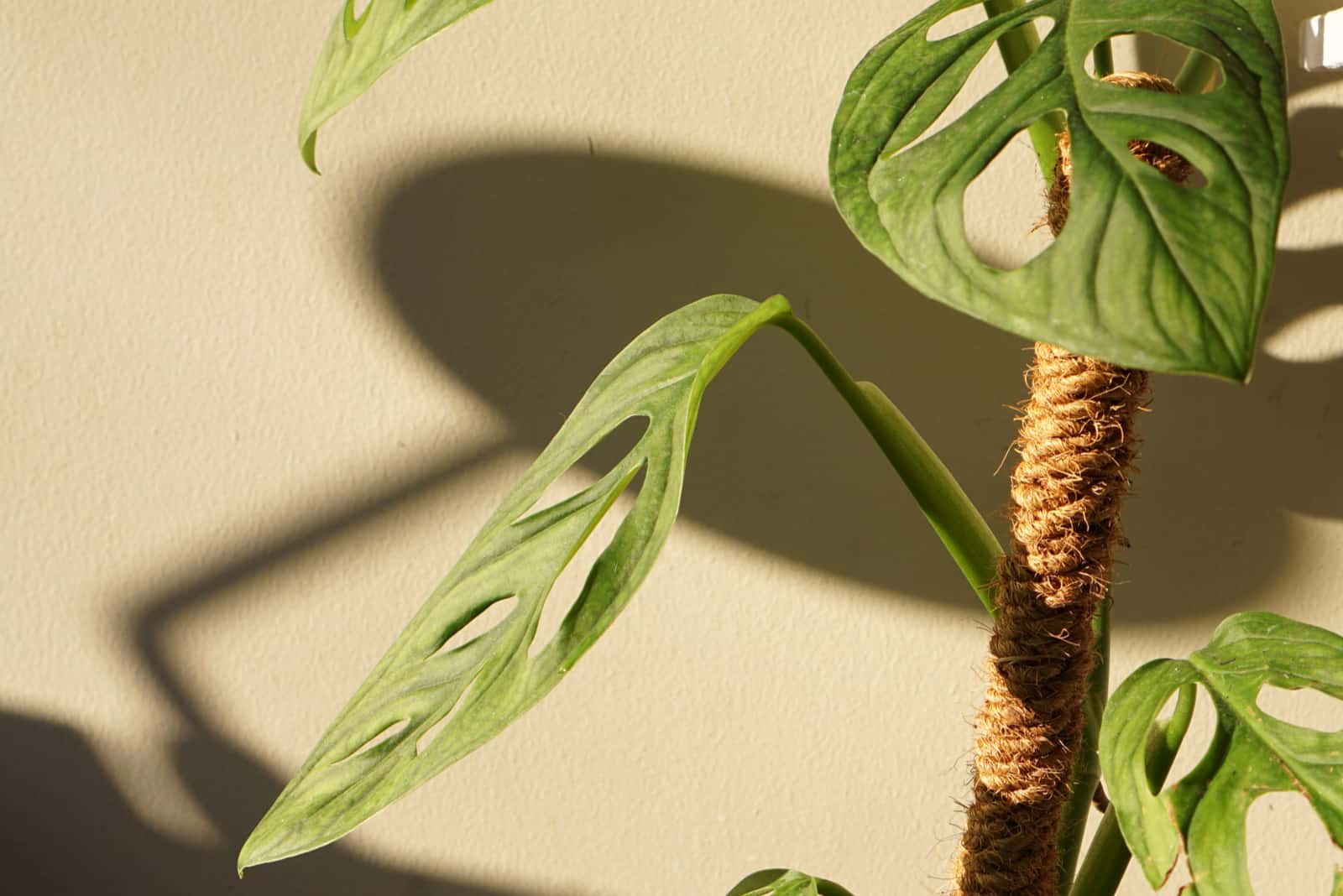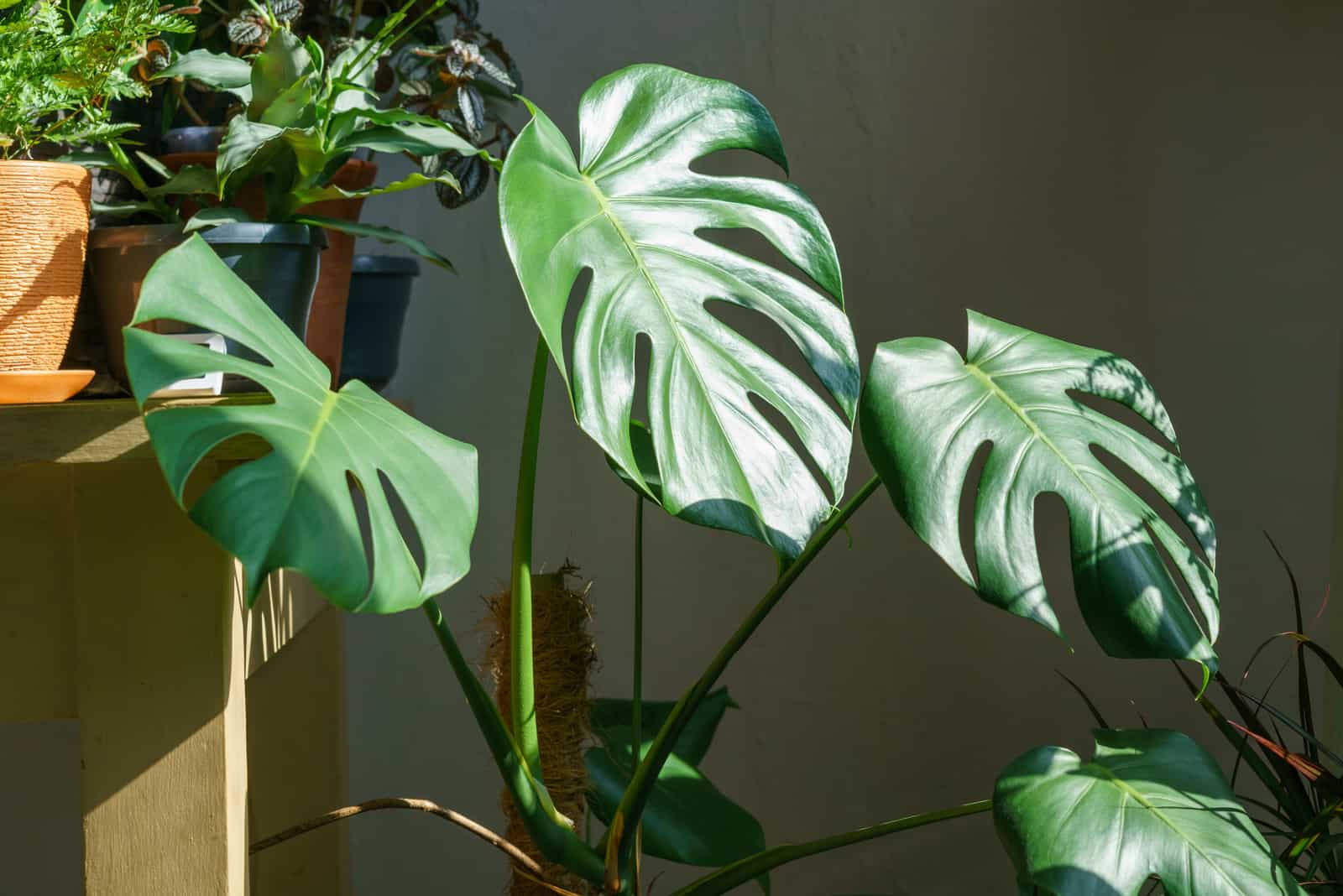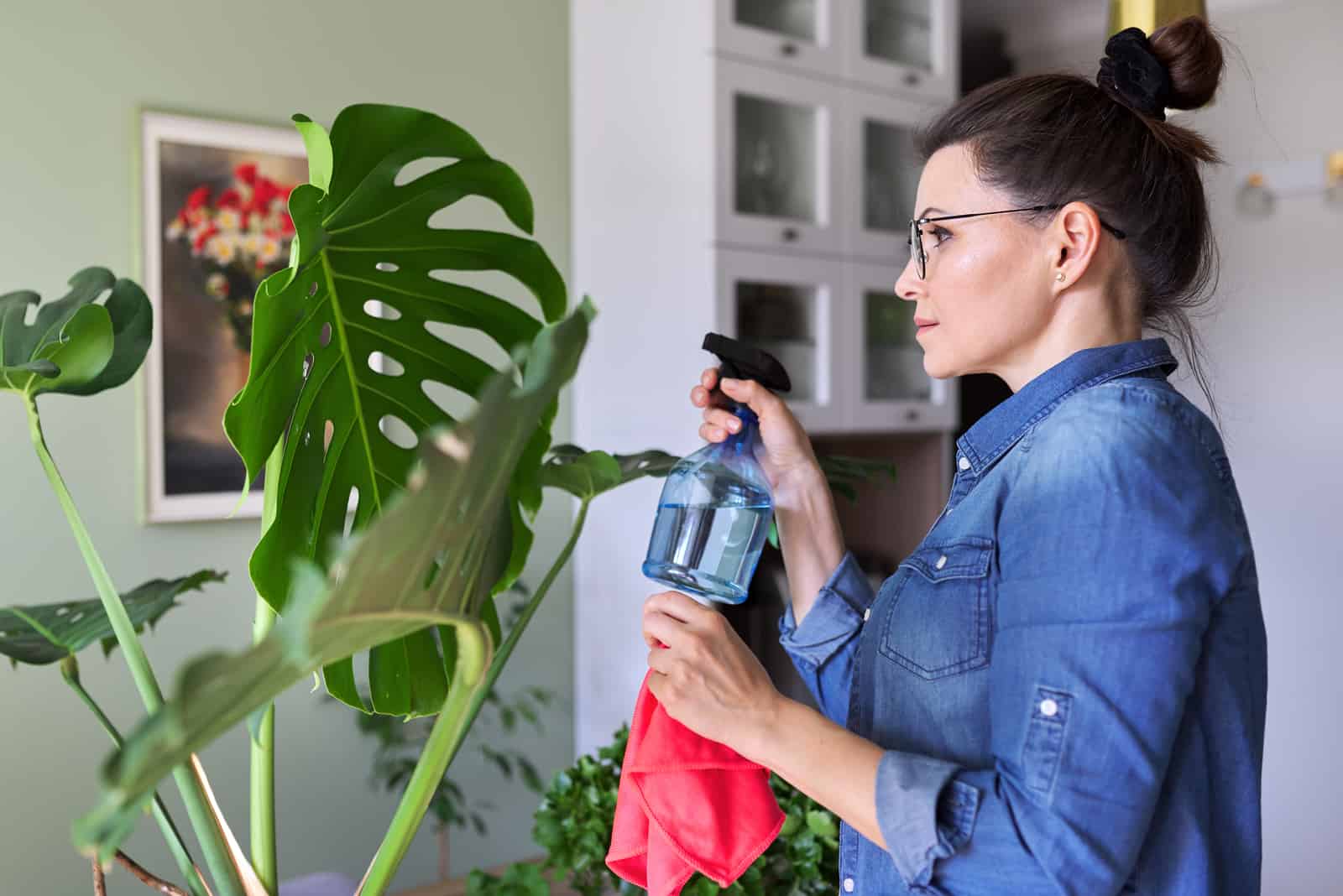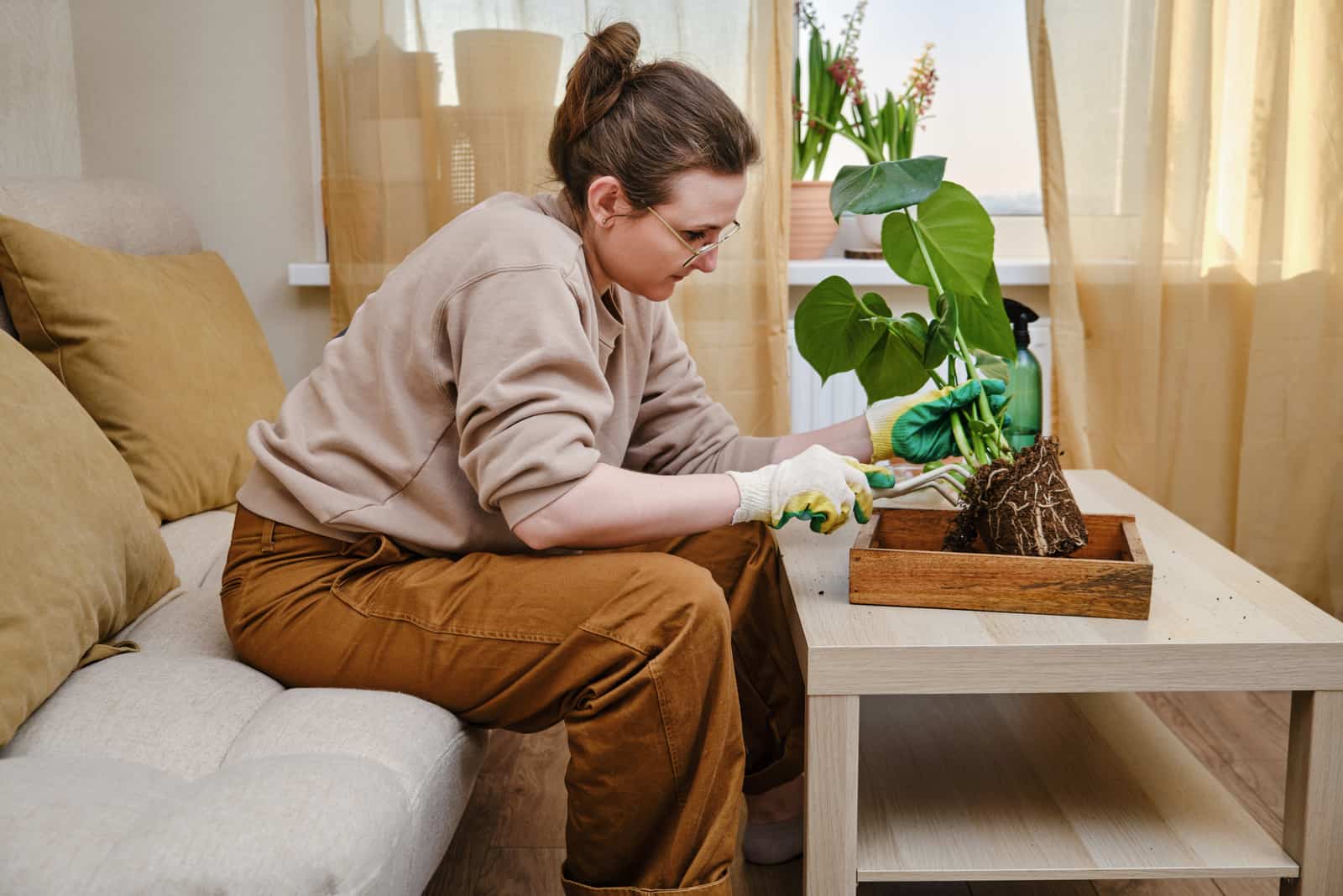Monstera plants and Monstera varieties are by far the most common houseplants.
These plants are undoubtedly stunning, but have you ever seen a Monstera plant supported by a stake? That’s a genuine diamond.
I admit I was scared to try staking at first, but now I am so glad I did it.
I will share all my experience and tips on how to stake a Monstera with you in this article.
Of course, there are many other things to consider before and after supporting the plant with a stake.
Therefore, I decided to provide you with plenty of information about the different aspects of staking, including- staking methods, the best stakes, and much more.
Let’s get started!
How To Stake A Monstera – The Best Methods
I’m sure you’ve heard about many different staking methods. The methods listed below are my personal choices, and I’m sure they will be helpful and relatively easy to perform.
No matter which staking method you decide to use, whether it’s a single stake, wire, wire cage, or moss pole, you will be fine!
Let’s get into details.
The Single Straight Stake Method
The single straight stake method is the most common with single-stemmed plants, like Monstera.
All you need is a straight stake and a couple of minutes.
If you decide to use the single straight stake method, put the stake into the soil and gently tie the plant to the stake.
If you tie your Monstera too tightly, it can damage it and stunt its growth.
The best thing would be to choose stretchy ties like nylon. These materials won’t damage the plant and are easier to handle.
Wire Cage Method
If you have a multi-stemmed Swiss Cheese plant that’s heavy on top, I recommend using the wire cage method.
Wire cages are available at most plant stores. However, if you can’t find one, you can make one yourself.
This method is simple: take a wire cage and surround the plant with it.
There is no tying, as the wire cage will support the plant.
I must remind you that you need to ensure there is space between the plant and the wire cage to let your Monstera spread out.
Wire Method
This method should be your first choice if your Split Leaf Philodendron grows freely, as you can use the wire to shape the plant.
This is an easy method as you only need a piece of wire and your hands.
The process is simple: take the wire, create a loop with it, and put both ends onto the top, then gently tie Monstera to the wire.
Moss Pole Or Trellis
From my experience, the moss pole method is the most complicated.
However, if you have a climber, this is undoubtedly the best thing you can do to support its growth.
You can either purchase a moss pole at a nearby plant store or make it yourself.
If you decide to use a moss pole, put it in the front part of the soil instead of dead center.
This will help your Monstera face outwards and look even more stunning.
The next thing you should do is gently tie the stem of the plant to the moss pole. For this purpose, choose cotton string, nylon, or yarn.
Wait patiently until your Monstera attaches itself to the pole and starts growing upwards.
When To Stake A Monstera
You might be wondering how to recognize when a plant needs staking.
There are a couple of signs which show you that it’s time for staking.
You should stake a Monstera when the aerial roots start showing, when the plant grows horizontally, when you notice the primary stem drooping, or when the plant needs repotting.
Let’s see some more details.
Aerial Roots Showing
When the Monstera plant finds efficient support, it will start climbing. You will notice that the plant develops aerial roots.
You can also hide or prune the aerial roots if you don’t like to see them on the plant. In my opinion, you should do this if your plant is in a cramped space.
By supporting the aerial roots, you help them spread out in the way you desire.
Additionally, if you stake a Monstera with a moss pole or trellis, it will grow in the right direction.
Monstera Grows Horizontally Instead Of Vertically
Swiss Cheese plants can grow either vertically or horizontally.
If you have a lot of space or a greenhouse, I assume you want your plant to be all over the floor. I find it amazing!
On the other hand, once the plant spreads after a couple of months, you will have to consider supporting it if you have a smaller living room.
If you don’t want to let the Monstera occupy your space, stake it to support its vertical growth.
Before staking for this purpose, remove or prune the branches.
Major Stem Drooping
Monstera leaves are known for their size, and will grow horizontally and eventually droop if you don’t stake the plant.
Just to remind you, the leaves will droop axially over time due to their size, which is entirely normal.
In my opinion, you should stake the plant to manage its weight, but also to prevent the leaves from drooping.
However, if you don’t stake the Monstera plant, the main stem of your Monstera will droop and it will seem as if the plant is falling over.
Although this is not dangerous for older plants, it can cause young Monsteras to break completely.
Monstera Needs Repotting
The Monstera plant needs repotting every few years.
The pot size determines how the plant will grow. Therefore, every plant needs repotting.
You can leave the plant in the same container if there are no signs of damage, but your plant will need some sort of refreshment.
To achieve this, stake the plant after you put it in a new pot to manage its growth and prevent different diseases and the risk of death.
How To Repot A Monstera
Larger pots need more soil and if they are too big, the Monstera roots will have too much excess soil surrounding them. Therefore, the more soil, the higher the moisture level, which leads to root rot. The Monstera Adansonii, for example, is known as a fast grower. It you grow one you’ll have to repot more often compared to other houseplants.
When repotting Monstera plants, water them the day before. Take the Swiss Cheese plant out using your hands and slowly shake off the roots. Leave 1/2 of the soil on the roots and then place them in fresh potting soil. Press the soil down a bit so you prevent air spaces.
Tips for repotting:
1. Choose the right pot. The pot shouldn’t be too big because if there is more soil around the root system than there should be, the soil will retain excess water and become mushy.
2. Pay attention to drainage holes. All excess water must be drained from the soil to avoid root rot. This will prevent root rot and create a safe environment in which your Monstera plants can thrive.
3. Large pots need more soil, so watering needs to be adjusted as there is soil around the root system. In other words, watering should occur less frequently.
Air space in a soil’s potting mix should not be clogged with water. This will prevent oxygen from accessing the roots and destroying the entire system.
Old soil that has been contaminated should always be replaced with fresh soil to avoid further complications. Observe your plant to spot any changes and react in good time.
Find The Perfect Stake
Although Monstera plants can be staked with a tied-up rope to prevent the plant from drooping, I recommend you invest in proper poles to ease the process.
There are 6 possible stakes you should take into consideration.
Let’s look at them all!
Bamboo Stakes
The perfect size for a bamboo stake is 35 x 0.25 x 0.25 inches, and it should weigh about 0.64 ounces.
There are a couple of advantages of bamboo stakes:
• They are available in every store and are affordable.
• This type of stake can be reused. It can serve for different gardening purposes, including garden staking or field staking.
• They are lightweight.
• They are strong.
The great news is that you won’t need any special tools to fit or shape them to look like a trellis. This means they can be used as stakes for both outdoor and indoor plants.
Moss Pole
I think many gardeners would agree that this is the best choice for stakes. However, great alternatives for moss poles can be used so if you’re unable to find a moss pole, it’ll be helpful.
The perfect size for a moss pole is 17.17 x 4.33 x 2.13 inches, and it should weigh about 13.4 ounces.
What I find striking about moss poles is that their fuzzy texture imitates the mossy growth of Monsteras under the forest trees.
Your Monstera houseplant will grow healthier and larger if the pole is high and wide.
Slender Rebars
Slender rebars should be your first choice if you are growing the plant in a green room or outdoors.
It should be 17.63 x 4.73 x 2.36 inches in size and weigh about 7.41 ounces.
To cement the structure, use a bit of mesh and plaster. This way, the plant will be well protected from any weather.
Coco Coir Pole
If you don’t plan to move your Monstera outdoors, a coconut coir pole will be a good choice.
It should be 23.62 x 1.77 x 1.77 inches in size and weigh about 6.35 ounces.
They can be used in medium-sized rooms. They will work as an excellent climbing pole and make for a great plant support.
Your Swiss Cheese plant will quickly latch onto the pole, and it will help the plant absorb moisture from the environment.
Tree Slabs
This may be hard to believe, but tree slabs can be helpful and efficient if you decide to stake a Monstera.
The outer part of tree slabs will give the plant ample strength.
This is also a way to mimic how Monstera plants would climb in the wild.
PVC Pipe (DIY)
If you like to do things yourself, this is a great choice.
You’ll need a PVC pipe, sphagnum moss or totem, a fishing line, scissors, and a sharpie.
Here’s a video showing you how!
Staking A Monstera Deliciosa
Let’s look at the entire process of staking your Monstera deliciosa. Don’t worry, it won’t take too long.
Before you start anything, prepare the following materials:
• Potted Monstera Deliciosa
• Bamboo sticks
• Soft plant ties or velcro garden ties
• Cotton string
• Coir
Let’s get into details!
Preparing The Soil
This step is essential unless you want to damage the roots of your precious Monstera plant.
Make sure to loosen the soil around the stem of your Monstera. This will help you see the heaviest stem, which will need support.
Remove all excess soil from the roots directly connected to the heaviest stem.
Place The Stake In The Soil
After you identify and prepare the soil and the area for the stake, take a garden spade or similar long tool.
Dig a tiny hole first, and then dig deeper until there is enough space for the stake to be inserted and stand firm.
Position the stake to provide the best support for the stem. You can move it around if you need.
After you insert the stake, add the moss you removed earlier so the stake can stand firmer and make sure it goes to the bottom of the pot.
Use Support Materials
In my opinion, you can skip this step. However, it will add extra support.
You can use different materials, such as twines, hemp ropes, and plant tapes. Whichever you choose, it will serve as a backbone on top of the stake.
You should loosely connect the stems and stakes. On the other hand, if you connect the stem of your Monstera and the stake too firmly, you risk damaging it.
The stake will stay straight if you place it in a new pot and cover it with soil.
Tips To Train Monstera Plants Around A Support
After you stake a Monstera, you can train it around a support.
Let’s see how!
Train Young Monstera
If you want to train your Monstera, such as a Monstera Adansonii, to climb and grow upright, you should train the plant when it is young.
Young plants haven’t reached their full potential yet, so they will be more manageable.
After inserting the stake, shift the stems around, including the main stem, to help the plant grow in the desired direction.
The Monstera Adansonii is a natural climber and will appreciate this help.
Let Older Monstera Climb
Even though it’s complicated, you can train older Monstera plants to climb with support.
Why is it complicated? Because the stems of older Monsteras are no longer flexible, but actually rather stiff, so it will take more time and patience.
Take a stretchy tie, and tie the stems to the stake. Make sure to tighten the tie every few days.
Stop tightening when you are sure that the plant is growing as you wish. You can also use other vining plants to support your Monstera’s growth.
Moist The Stake
Moistening the stake will save your time, and your mental health!
The aerial roots will help your plant grow higher and absorb water from the moist stake.
Fill a sprayer with water and spray the stake every few days. This will keep the aerial roots hydrated and growing in the right direction.
Stake Extension
Just a quick reminder that your Monstera will grow faster after inserting the stake.
There are two things you can do to extend the pole:
• Use an extendable pole at the beginning of staking
• Tie two poles together.
Trust me, it’s better to prepare yourself for stake extension than be shocked when you see the plant fall over. That would be a true disappointment!
Rotate Your Monstera
If the plant faces one direction for a long time, it will find a light source.
As a consequence, the plant will begin to lean towards the light source.
Additionally, all the leaves will grow in that direction, so there won’t be weight balance, which will stunt the Monstera’s growth.
Rotate the plant so each side of the pot receives the same indirect light.
You can rotate the plant each time you water it or set a reminder.
Trim Properly And Regularly
The leaves and branches of the Monstera should be trimmed often, otherwise they will take over wherever they live!
Don’t worry about removing some Monstera leaves, as it develops new leaves every two weeks.
See this as a chance to propagate and witness new growth.
Do I Need To Stake A Monstera?
I find it interesting that Monsteras are epiphytes, which means they actually serve as support to other trees.
Like pothos, as natural climbing plants, Monsteras will appreciate being supported by a stake.
Let’s see why it is beneficial to stake these tropical plants.
1. By staking, you help your Monstera grow in the right direction. You can also manage their space, which wouldn’t be possible if you skipped staking.
2. This aroid will search for a light source and grow in that direction if you don’t stake it. The entire plant is at risk of falling over if you skip staking.
3. This is my favorite part! Monstera leaves have a fantastic feature: they develop fenestrations or holes in their leaves, and the leaves will grow larger, faster, and develop fenestrations faster when staked.
A Care Guide For Monstera Plants After Staking
I would like to share a few tips for Monstera plant care with you.
Perfect place: The plant grows best in indirect light. Never expose a Monstera to direct sunlight as it can cause leaf burn.
Soil type: Add extra perlite and peat moss to help your plants thrive. Choose well-draining soil. You can improve drainage if you use a pot that has drainage holes. The required pH level is 5.5-6.5 (alkaline pH).
Rotation: Rotate the plant each time you water it to enable each side to get enough light.
Misting: Mist the leaves in between waterings.
Inspect regularly: There are specific issues that may occur with your Monstera. By observing its roots and leaves, you will recognize if something is wrong.
Repotting: Repot you Monstera every two years.
FAQs
Why is my Monstera falling over?
If the plant looks healthy, but keeps falling over, it needs support. If only one side of the Monstera plant faces a light source, the plant will fall over because the leaves will constantly search for light. However, you will have to inspect further if the plant has any signs of damage, such as yellow leaves, brown leaves, soggy soil with a foul odor, or curly leaves. There are many reasons the plant can have these issues, such as overwatering, underwatering, or root rot.
What plants should I combine with my Monstera?
There are three plants that would go great with your Monstera: Pothos, Philodendrons, and Schefflera. Pothos grow well in low light and appreciate soil rich in nutrients, making them perfect companions for Monsteras. Philodendrons resemble Monsteras in shape, size, and growth conditions, making them good candidates to share the same pot as Monsteras. Schefflera plants require the same indoor conditions as Monsteras, and will do well in the same pot.
Wrapping Up
Who could have imagined that there are so many things to pay attention to when staking a Monstera?
Now you know how to stake a Monstera, I strongly recommend you do it, as it will keep your Monstera healthy and happy.
Until next time!

